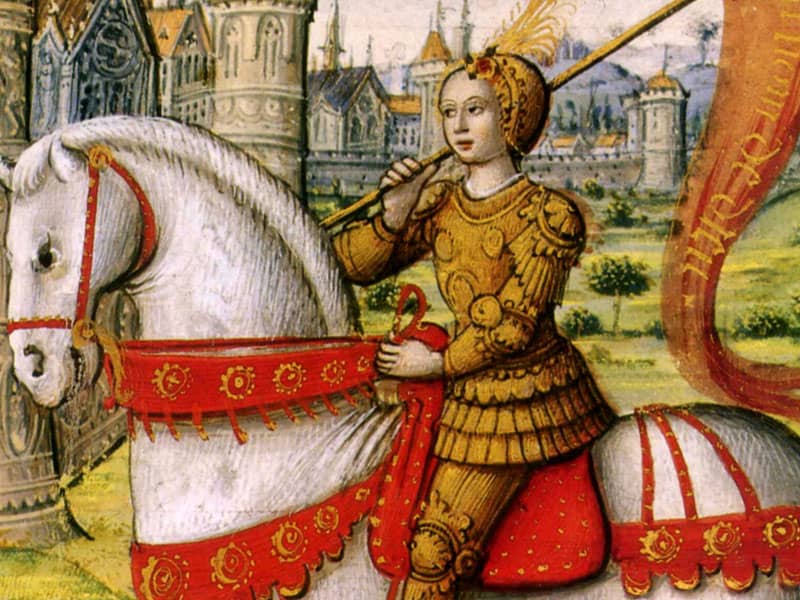Drexel, who left the life of a socialite to minister to Native Americans and African-Americans, will become the second U.S.-born saint. The Chinese martyrs will be China's first saints, and Mother Josephine Bakhita the first African saint.
Controversy over the canonization of 87 Chinese and 33 foreign missionaries clouded the celebrations planned by followers of Drexel, Bakhita, and Mother Maria Josefa of the Heart of Jesus Sancho de Guerra.
In the latest of a series of attacks on the Vatican, a Chinese Foreign Ministry spokesman charged Tuesday (Sept. 26) that most of the martyrs were agents of Western imperialism who committed "enormous crimes." The pro-government Association of Christian Churches of China demanded in a letter read on television Wednesday (Sept. 27) that the Vatican "apologize for the crimes committed" by its missionaries.
Adding to Beijing's ire was the date of the canonizations. The Vatican chose the feast day of Saint Therese of Lisieux, patroness of missions, but Oct. 1 also will mark the 51st anniversary of the founding of the People's Republic of China.
"Next Sunday's ceremony does not have any political motivation and is not directed against anyone, least of all against the great Chinese people," Vatican spokesman Joaquin Navarro-Valls said.
While acknowledging that colonial powers had committed "misdeeds" in China, he said the martyred missionaries had lived exemplary lives and should be admired for "their abnegation and their desire to serve the Chinese people."
The Vatican's missionary news agency, Fides, reported that 57 Chinese bishops had sent the Vatican a petition asking for the canonizations. Fides said the prelates belonged both to the government-sponsored Chinese Patriotic Association and the underground church loyal to the Vatican.
The candidates for sainthood, including three Chinese children ages 9 and 11, were martyred between 1648 and 1930, well before the Communists took power in 1949. Many died during 1898-1900 in the Boxer Rebellion when xenophobic peasants slaughtered not only foreigners but also 30,000 Chinese Catholics.
The canonization ceremony is one of two scheduled for the church's current Jubilee Holy Year celebrations and was chosen to honor missionary activities. Following the elevation of 27 Mexicans on May 21, it will bring the number of saints created by John Paul in the 22 years of his pontificate to 446, compared with 300 by all his predecessors combined.
At least 3,500 pilgrims from the United States, including 1,500 from Philadelphia, are expected to come to Rome to celebrate Drexel's elevation to sainthood. They include the band of Xavier College in New Orleans, which was established by Drexel as the first institute of higher learning for African-Americans.
Several U.S. parishes also are sending delegations to honor Bakhita, some of whose relics have been placed in the heritage chapel of the Basilica of the National Shrine of the Immaculate Conception in Washington, D.C.
Drexel, who founded the order of the Sisters of the Blessed Sacrament in 1891, will be the fifth U.S. saint. The others are Mother Elizabeth Ann Seton of Baltimore, until now the only American-born saint, Mother Frances Cabrini, Bishop John Neumann, and Sister Rose Philippine Duchesne.
Born in Philadelphia in 1858, Drexel was the debutante daughter of an international banker. She shunned society to become a nun, investing her fortune of some $20 million in schools, missions and other services for Indians and African-Americans.
For both Drexel and Bakhita, the process leading to canonization was unusually swift. Drexel will become a saint only 45 years after her death in 1955 and Bakhita only 53 years after her death in 1947.
Bakhita, known as the "holy slave," was born in Darfur in Sudan in 1869. Kidnapped and forced into slavery at the age of 7, she was taken to the Veneto region of northern Italy by an Italian diplomat at the age of 16 and became a nursemaid to a family that agreed to her request for religious instruction and baptism.
Entering the Canossian order of the Institute of the Daughters of Charity, Servants of the Poor, she lived most of her life in the Canossian community in the northern Italian town of Schio, serving as cook, sacristan, doorkeeper, and nursery school teacher.
Loved by the townspeople, who called her "little black mother," and known for her piety, she gained a wide following and was considered an inspiration to missionaries in Africa. One biographer described her as "a perfect religious and a true Canossian," and another said she was "proclaimed a saint by the voice of the people while she was still alive."
Sancho de Guerra, born in 1842 in the Basque city of Vitoria in northern Spain, founded the Institute of the Servants of Jesus of Charity, a nursing order that she carried from the Mediterranean to Chile. She died in 1912.

